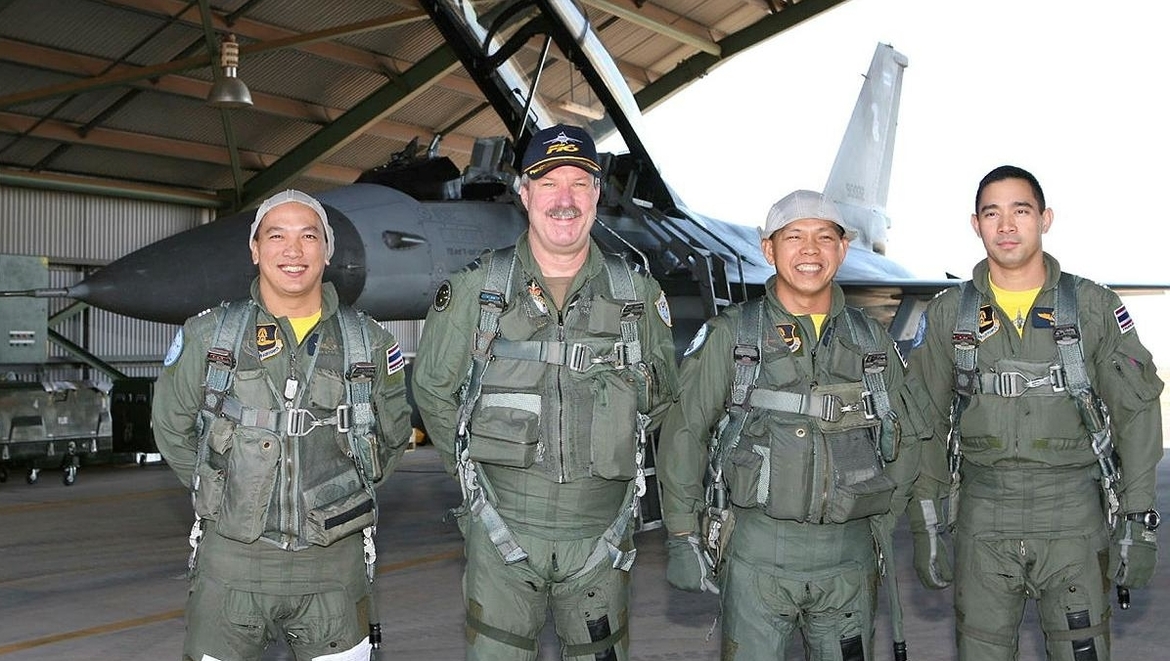As Air Vice-Marshal (Ret’d) John Quaife looks back on a long association with the RAAF's biennial capstone exercise, he reflects on changes to Pitch Black – many of which he himself oversaw.
"We have managed to build something that is unique in the world and exceptionally valuable for the development of our people," he said. "Because it’s good, others want some of it."
Exercise Pitch Black wasn't always the large-scale international exercise it is today. When Quaife's Pitch Black story began in 1982, it was a Sector Air Defence Exercise (ADEX) designed to exercise the air defence sector as it was established at Williamtown – which meant exercising the alert-detect-scramble-intercept kill chain, with an emphasis on night flying.
Part of this component included both the Mirage and Hornet fighters, as well as leadership positions as Commanding Officer No. 77 Squadron, Commander Air Combat Group, and Air Commander Australia.
Quaife said he started out at the helm of a MB326 Macchi Lead-In Fighter, as a Pilot Officer flying "target" sorties out of Richmond. Of six flown, two were flown at night.
"As pilot of a Macchi target, my job was to simply fly a pre-planned route out of Richmond that entered the Williamtown airspace from the north-west," he said. "Along the way, I would be intercepted by Mirages scrambled out of Williamtown, no doubt launching from an alert posture in the Willy Operational Readiness Platform.
"There was no free play [in the exercise]. I have no idea who was calling the shots, but I suspect it was the Sector Air Defence Commander, and in those days we used to have such things as SADOC (Sector Air Defence Operations Centre) executive courses to teach people how to do that stuff.
"I also note from my log book that between 1982 and 2002 I flew in a lot of Air Defence exercises, but no complex strike exercises other than Cope Thunder. For example, every time we deployed to Butterworth/Singapore we flew in an IADS ADEX (Integrated Air Defence System Air Defence Exercise). I had my second Cope Thunder experience in 1989 and it was a lot more fun flying a Hornet in that exercise than it was flying a Mirage. Once again, that exercise reversed the roles that we usually exercised in Australia (with Blue Air flying strike mission profiles, and Red Air defending)."
By the time Pitch Black 2002 rolled around, international allies like Singapore had tagged on to the exercise – and Quaife had made Commander Air Combat Group (ACG). As the Officer Conducting the Exercise, this afforded him free reign to convert the air defence exercise into a strike exercise.
"In developing the exercise, we tried to maintain the good bits from the previous incarnation, but avoid some of the bad stuff. Exercise Pitch Black 2002 was the first Pitch Black where we were able to exercise Air Combat Group as a Group with F-111 and F/A-18 finally working together. We certainly kept the night serials," he said.
A move to Headquarters Air Command as the RAAF’s first JFACC (Joint Force Air Component Commander) in the years leading up to 2004 saw Quaife continue to mould Pitch Black, marking a major shift as the Recognised Air Picture (RAP) was fed to RAAF Base Glenbrook.
By Exercise Pitch Black 2006, Quaife had made Air Commander Australia (ACAUST).
"By now the development of the exercise was mature and understood – in fact it was hard to get volunteers to play Red Air and we had to cycle Hornet pilots through the role in order to ‘share the pain’. I kept out of the way but I did manage to fly an F-111 and F/A-18 serial (under supervision) and I also flew a back seat F-16 serial with the Royal Thai Air Force."
After over 20 years' involvement with the exercise, Quaife knows Pitch Black better than nearly anyone. A "world-class exercise", he calls it, one of the most exhilarating taskings the service offers. "The Northern Territory airspace is awesome," he said.



